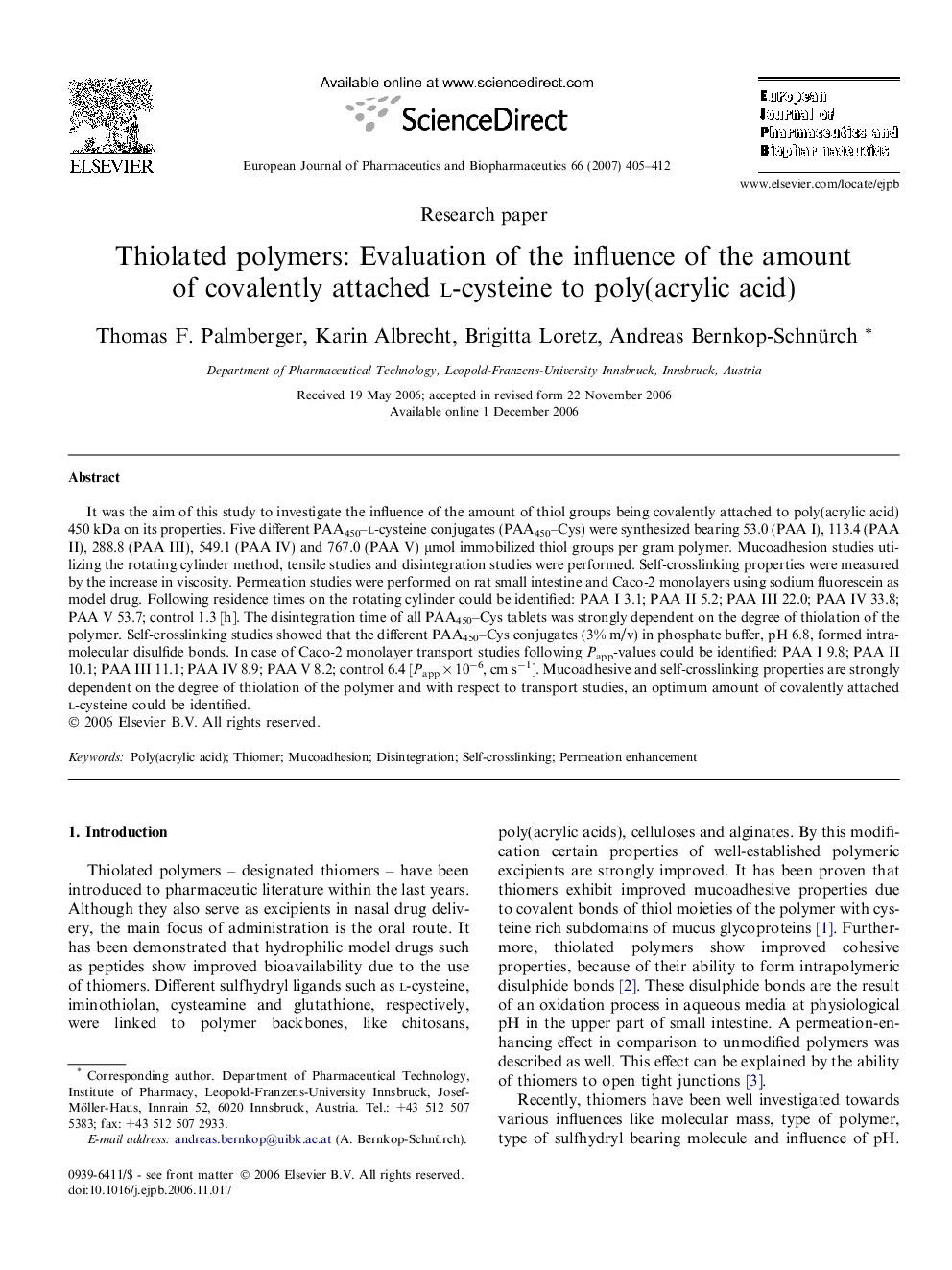| Article ID | Journal | Published Year | Pages | File Type |
|---|---|---|---|---|
| 2085143 | European Journal of Pharmaceutics and Biopharmaceutics | 2007 | 8 Pages |
It was the aim of this study to investigate the influence of the amount of thiol groups being covalently attached to poly(acrylic acid) 450 kDa on its properties. Five different PAA450–l-cysteine conjugates (PAA450–Cys) were synthesized bearing 53.0 (PAA I), 113.4 (PAA II), 288.8 (PAA III), 549.1 (PAA IV) and 767.0 (PAA V) μmol immobilized thiol groups per gram polymer. Mucoadhesion studies utilizing the rotating cylinder method, tensile studies and disintegration studies were performed. Self-crosslinking properties were measured by the increase in viscosity. Permeation studies were performed on rat small intestine and Caco-2 monolayers using sodium fluorescein as model drug. Following residence times on the rotating cylinder could be identified: PAA I 3.1; PAA II 5.2; PAA III 22.0; PAA IV 33.8; PAA V 53.7; control 1.3 [h]. The disintegration time of all PAA450–Cys tablets was strongly dependent on the degree of thiolation of the polymer. Self-crosslinking studies showed that the different PAA450–Cys conjugates (3% m/v) in phosphate buffer, pH 6.8, formed intramolecular disulfide bonds. In case of Caco-2 monolayer transport studies following Papp-values could be identified: PAA I 9.8; PAA II 10.1; PAA III 11.1; PAA IV 8.9; PAA V 8.2; control 6.4 [Papp × 10−6, cm s−1]. Mucoadhesive and self-crosslinking properties are strongly dependent on the degree of thiolation of the polymer and with respect to transport studies, an optimum amount of covalently attached l-cysteine could be identified.
